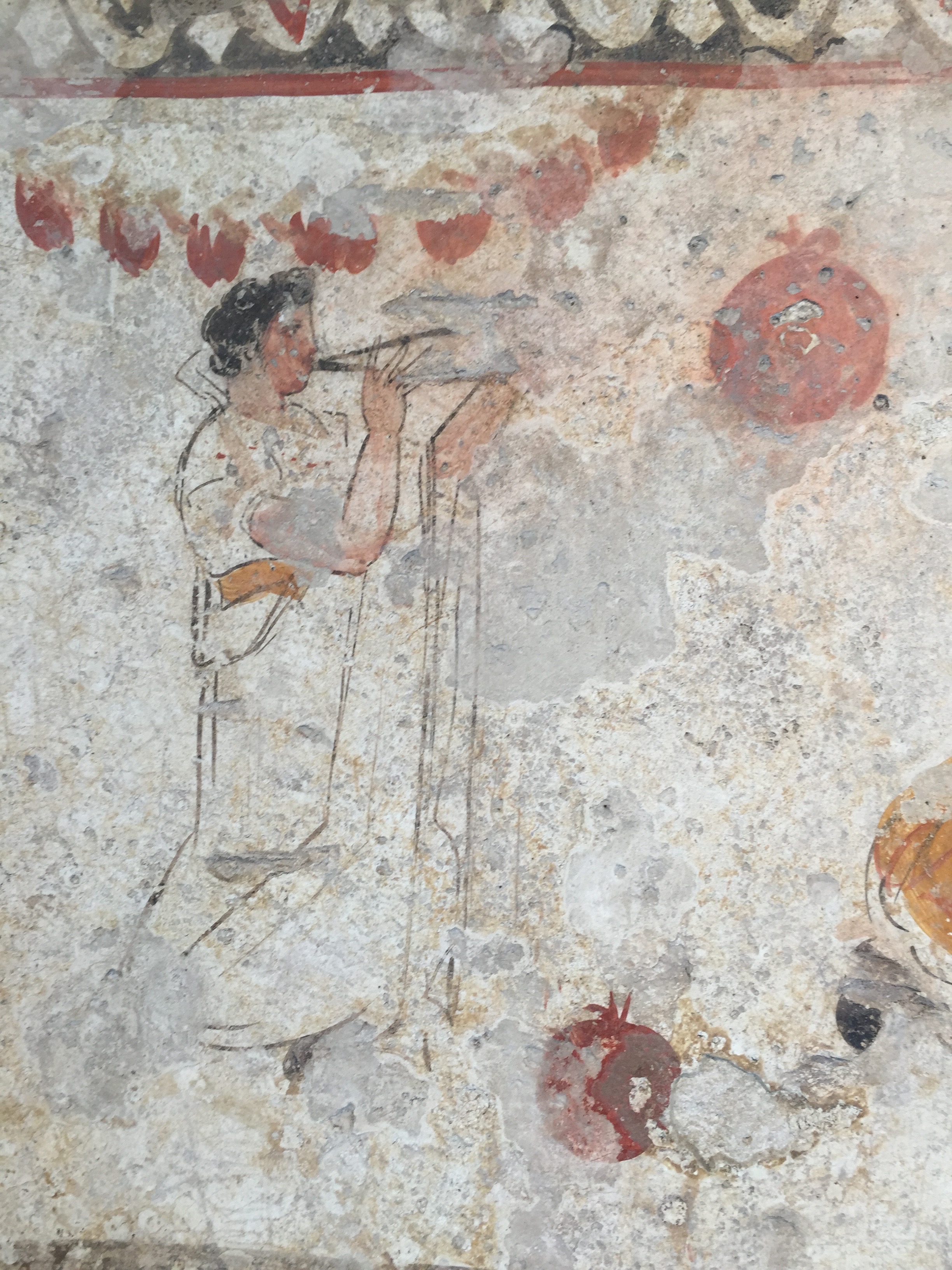Madonna of the Pomegranate
While pumpkins are synonymous with autumn in the United States, pomegranates signal fall in Italy. The Cilento is bursting with pomegranate trees. In a region filled with Greek ruins, the myth of Persephone is easily recalled. Because she ate 6 pomegranate seeds, Zeus condemned Persephone to live with Hades as Queen of the Underworld, thus creating the winter. But she would be allowed to return to earth in the spring time when her mother Demeter, goddess of the grain, expressed her happiness by bringing new life to the trees and fields.
At the ancient site of Paestum, the painted tombs which are now in the Paestum Archaeological Museum are full of pomegranates. They fill an urn above a dead body, hang in the background of domestic scenes and serve as decorative elements solely for the purpose, it seems, of entertaining the deceased.
Also excavated at Paestum is a sculpture of the goddess Hera holding a pomegranate. Instead of a symbol of the underworld and death, here it serves as totem of fertility.
This image may have been used by the Byzantine monks who Christianized the region in the 8th and 9th century and established a devotion to the Madonna del Granato or the Madonna of the Pomegranate. This image painted on tile is part of a devotional sculpture commissioned by my great-grandfather. After surviving a dangerous fall off of a scaffold that he attributed to an intercession of the Madonna, he had this made and erected at the beginning of the long road leading up to the Basilica.
Borgo La Pietraia, our home in Italy, is a 20-minute walk from the Basilica of the Madonna of the Pomegranate. Its rosy facade signals fall, the long winter ahead, but also the fertility and renewal of the earth.
Sanctuary of the Madonna del Granato, a short walk from Borgo La Pietraia.









